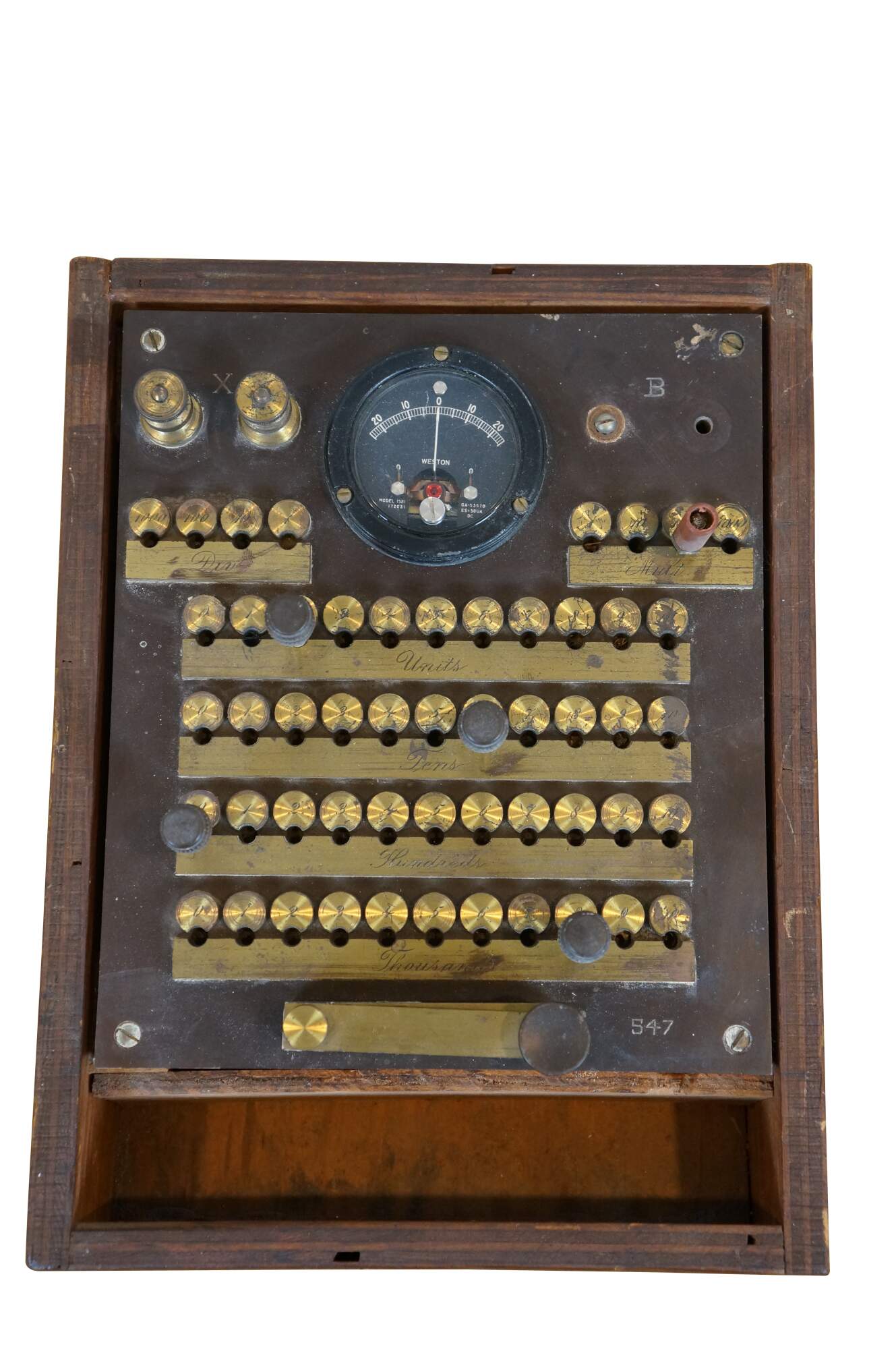
Shipping:
Free Shipping Included
Delivery:
Estimated 2-15 Business Days
Payments:
Credit Card, Check, Cash, PayPal, Apple Pay, Venmo
Returns:
30 Days 100% Money Back Guarantee, Buyer Pays Return Shipping
Description
Rare late 19th to early 20th century Weston Wheatstone bridge - Model 1521 - 172031 - GA-53570 ES=50UA DC. Metal top marked 547 with brass terminal posts, movable pins and glass front gauge. Mounted in a plywood box.
"A Wheatstone bridge is an scientific electrical circuit used to measure an unknown electrical resistance by balancing two legs of a bridge circuit, one leg of which includes the unknown component. The primary benefit of the circuit is its ability to provide extremely accurate measurements (in contrast with something like a simple voltage divider). Its operation is similar to the original potentiometer. The Wheatstone bridge was invented by Samuel Hunter Christie (sometimes spelled "Christy") in 1833 and improved and popularized by Sir Charles Wheatstone in 1843. One of the Wheatstone bridge's initial uses was for soil analysis and comparison."
"The Weston Electrical Instrument Company was founded in 1888 by Edward Weston in Newark, New Jersey. Before founding the company, Edward Weston developed a saturated cadmium cell, a battery that produced a voltage stable enough to be used as a calibration standard for voltmeters. His eponymous company later went on to sell these standard cells, as well as portable test equipment. They were the first to develop accurate portable direct reading voltmeters and ammeters, and the first portable light meter.
Condition
Good Overall - Gentle wear
Dimensions
9" x 12" x 5" (Width x Depth x Height)
You May Also Like